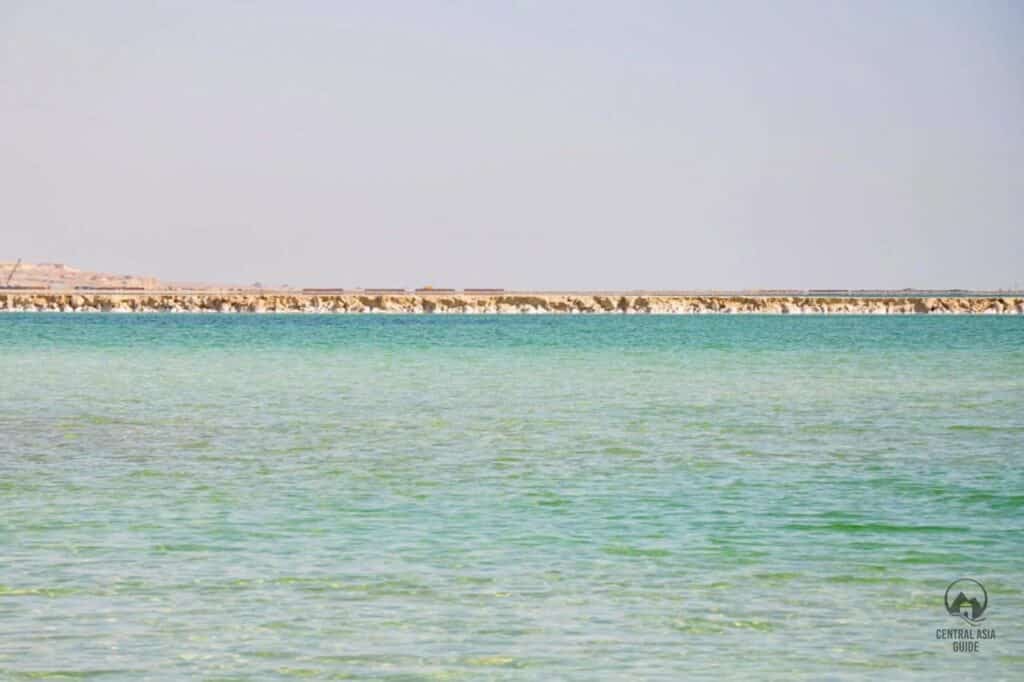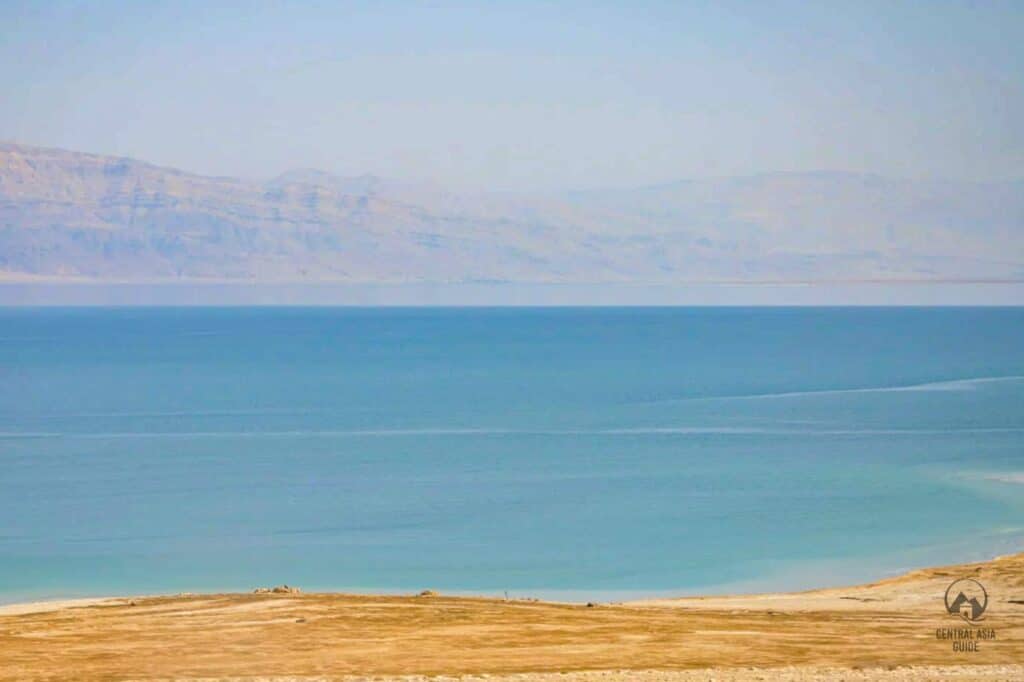Garabogazkol Basin
Gulf Kara - Bogaz - Kol
Garabogazkol (Black throat lake in Turkmen) basin is also known as the Gulf of Garabogazgol. Garabogazkol is isolated in the empty, northwesternmost corner of Turkmenistan, east of the coastline of the Caspian Sea, just south of the border with Kazakhstan. Garabogazkol basin is a shallow salt lagoon, that has shrunk from about 17000 km2 to in 1900 to the about 8000 km2 in 2000. Nevertheless, it is still the world’s largest such lagoon.
It is also one of the saltiest bodies of water on Earth due to the high evaporation, surpassing even the much smaller but more famous super-briny Dead Sea and is at least as deadly as an environment. Therefore, it is listed as one of the dark tourism destinations of Central Asia but offers very interesting natural phenomenona with great tourism potential. The lagoon is connected to the Caspian sea only by a narrow strait that was blocked between 1980 and 1992 by the locals when the level of the Caspian sea was lower than the Garabogazkol lake.


Garabogaz Village
Garabogaz was called Bekdash until 2002 and is a nearly-abandoned Soviet industrial city next to the strait connecting the lagoon to the Caspian Sea. It is probably the harshest settlement in Turkmenistan, filled with vacant apartment blocks gutted for anything usable. The city is surrounded by surreal-looking salt lakes, the remains of a once profitable sodium sulfate leftover business. The livelihood of the town is still based around sodium sulfate. This is a long-standing industry, developed in the late 1920s, which depends on the concentration of salts in Garabogazgol.
Waters from this are are led into a series of natural depressions around the town, relying on the power of the Turkmen sun to further increase the salt concentration. The outcome of the process is sodium sulfate and other salts which can be shoveled up into 500kg sacks. The workers who carried out this tough labor under the burning sun were praised as heroes in the Soviet period, a sign at the entrance to the town features one masked sulfate collector proudly bearing his spade like a rifle. But the industry is facing difficult times. Sacks of sodium sulfate fill warehouses and railway wagons around the town for want of markets, the workforce has reduced, and many of the apartment blocks of the town stand half-empty. From here is a 40-minute drive to the Kazakhstan border on a rough dirt track.
Travel to Garabogazkol
From Turkmenbashi, there is a good road to Bekdash (Karabogas), with stunning views of the Caspian Sea and the Karabogas Basin. En route, you cross a bridge that spans the 5km-long channel which connects the Caspian Sea and the inland gulf. The distance between the bridge and Bekdash town is around 60 km. The area around Garabogazköl is extremely remote and difficult to get to. Traveling there also requires a special permit. It’s nearly impossible to visit it as an independent traveler, and if so then only at great cost and with much bureaucratic hassle. Only very few tour operators offer a short visit to Guwlymayak as part of special adventure packages.
Other sights and destinations near Garabogazköl basin
Page updated 1.7.2024